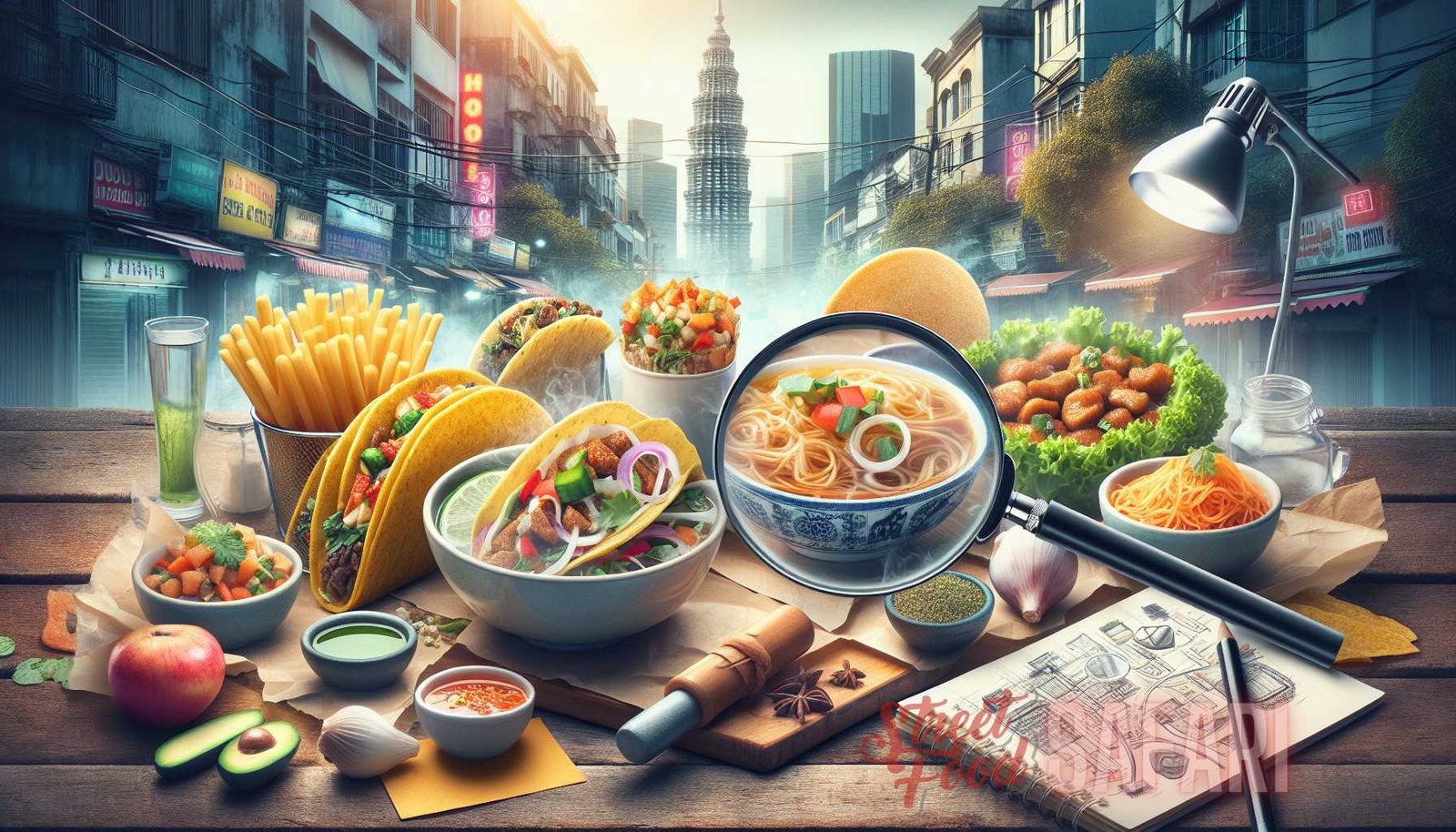—
Street food is a culinary phenomenon that has captured the hearts and taste buds of people all around the world. Whether it’s a hot dog cart in New York City, a taco stand in Mexico City, or a noodle vendor in Bangkok, street food offers a unique and delicious experience that can’t be replicated in a restaurant. But what makes street food so special? What is the science behind these mouthwatering creations? In this article, we will delve into the world of street science and uncover the culinary chemistry and gastronomic innovations behind this beloved culinary tradition.
1. The Art of FlavorOne of the key elements that sets street food apart from other forms of cuisine is its ability to pack a punch in terms of flavor. From spicy curries to tangy salsas, street food vendors have mastered the art of creating bold, complex flavors that tantalize the taste buds. But how do they do it? The answer lies in the science of flavor.
– Human perception of flavor: Flavor is not just about taste; it is a multisensory experience that also involves smell, sight, and texture. When we bite into a street food dish, our brain processes a combination of taste molecules, aroma compounds, visual cues, and textural sensations to create a holistic experience of flavor. – Umami: One of the key components of flavor is umami, the fifth taste besides sweet, sour, salty, and bitter. Umami is commonly described as a savory or meaty flavor, and it is found in ingredients such as soy sauce, tomatoes, and mushrooms. Street food vendors often use umami-rich ingredients to add depth and complexity to their dishes. – Spices and herbs: Another important aspect of flavor in street food is the use of spices and herbs. Spices such as cumin, coriander, and chili powder are often used to add warmth and complexity to dishes, while herbs like cilantro, basil, and mint impart freshness and brightness. 2. Culinary Chemistry: The Science Behind Cooking Techniques
Aside from flavor, another fascinating aspect of street food is the science behind cooking techniques. Street food vendors often cook their dishes in unique and innovative ways, resulting in mouthwatering creations that are both delicious and visually appealing.
– Maillard reaction: The Maillard reaction is a chemical reaction that occurs between amino acids and reducing sugars when food is cooked at high temperatures. It is responsible for the browning and caramelization of food, creating complex flavors and appealing textures. Street food vendors use this reaction to their advantage, grilling meats, toasting buns, and searing vegetables to enhance the taste and appearance of their dishes. – Frying: Frying is a common cooking technique in street food, and it involves immersing food in hot oil to cook it quickly and develop a crispy exterior. The science behind frying lies in the interaction between oil and water. When food is submerged in hot oil, the water content inside the food turns into steam, creating a protective layer that prevents the oil from being absorbed, resulting in a deliciously crispy texture. – Steaming: Steaming is another popular cooking technique used in street food. It involves cooking food by exposing it to steam, which heats the food quickly and evenly. Steaming is a gentle cooking method that helps retain the natural flavors and nutrients of the ingredients, making it a healthier alternative to frying or grilling. 3. Gastronomic Innovations: Thinking Outside the CartStreet food is not just about delicious food; it is also a platform for gastronomic innovations. Street food vendors around the world are constantly pushing the boundaries of culinary creativity, coming up with unique and exciting dishes that challenge conventional notions of what street food can be.
– Fusion cuisine: Fusion cuisine is the combination of different culinary traditions and techniques to create innovative and exciting flavors. Street food vendors are masters of fusion cuisine, blending ingredients and flavors from different cultures to create dishes that are both surprising and delicious. For example, Korean-Mexican fusion tacos, Indian-inspired sushi rolls, or Thai-style pizza. – Ingredient experimentation: Street food vendors are experts at using local, seasonal ingredients in creative ways. They constantly experiment with new and innovative combinations of ingredients to create exciting and unique dishes. This experimentation is a testament to their passion for their craft and their commitment to providing customers with unforgettable culinary experiences. – Visual presentation: In addition to taste, street food vendors also pay attention to the visual presentation of their dishes. Eye-catching, colorful, and Instagram-worthy food is a big draw for customers, and vendors use techniques such as garnishing, layering, and plating to create visually stunning dishes that are as pleasing to the eye as they are to the palate. ConclusionStreet food is not just about satisfying hunger; it is an experience that engages all of our senses and celebrates the rich diversity of culinary traditions around the world. The science of street food, from the art of flavor to the culinary chemistry behind cooking techniques, is what makes this culinary phenomenon so special.
By understanding the science behind street food, we can appreciate the skill and creativity of street food vendors who work tirelessly to create dishes that are not only delicious but also visually stunning. So the next time you find yourself in a lively street food market, take a moment to savor the flavors, admire the culinary innovations, and appreciate the science behind this gastronomic delight.

—
Internal Links:
– An article available at directly within the main content of the article. – An article available at directly within the main content of the article.External Link:
– Wikipedia: Street Food


